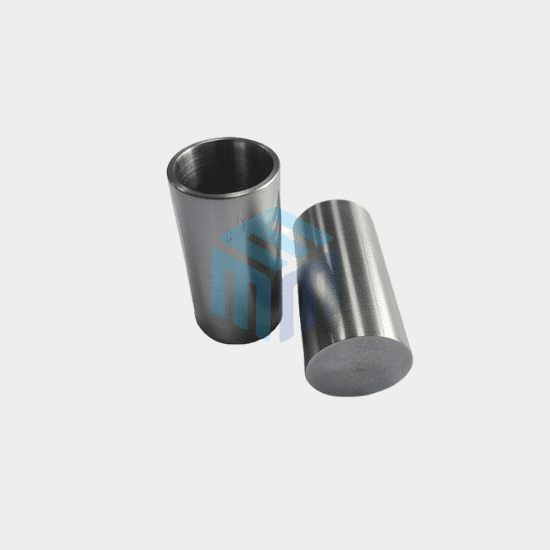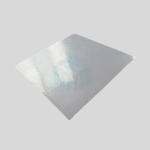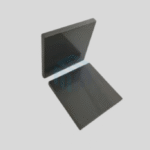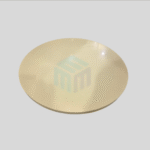Molybdenum stands out among refractory metals due to its superior combination of thermal, mechanical, and chemical properties. Here’s a breakdown of the key features that make molybdenum crucibles ideal for demanding industrial applications:
High Melting Point
With a melting point of approximately 2620°C, molybdenum is one of the best crucible materials for high-temperature applications such as metal melting, sintering, and vacuum evaporation.
Thermal Conductivity
Molybdenum provides excellent thermal conductivity, allowing for uniform heat distribution. This minimizes the risk of hot spots and cracking, especially in sensitive operations like crystal pulling and precision alloy processing.
Corrosion Resistance
Molybdenum crucibles are highly resistant to chemical attack from acidic and basic environments, particularly in vacuum or inert gas atmospheres. This makes them suitable for use in environments involving aggressive chemicals or fluxes.
Purity and Strength
Thanks to its high density and purity, molybdenum retains structural integrity under mechanical and thermal stress. Its excellent creep resistance ensures dimensional stability even under prolonged high-temperature exposure.
Industrial Applications of Molybdenum Crucibles
Molybdenum crucibles are widely used across a range of high-temperature industries. Common applications include:
- Crystal growth for semiconductors such as sapphire or silicon carbide (SiC)
- Vacuum thermal evaporation of metals and oxides in electronics and optics
- Powder metallurgy processes, including sintering of tungsten and other refractory metals
- Glass melting for optical and specialty glass under controlled environments
- Nuclear and aerospace materials research, where thermal stability and purity are critical
These crucibles are ideal in vacuum furnaces, induction heating systems, and inert gas environments, making them versatile across both R&D and production-scale facilities.
Read also: Uses & Benefits of Molybdenum Crucibles
Why Choose Molybdenum Over Other Materials?
While graphite crucibles, tungsten crucibles, and ceramic crucibles have their own benefits, molybdenum offers a balanced solution between thermal performance, mechanical strength, and cost-effectiveness.
Compared to graphite, molybdenum is:
- Less reactive in vacuum conditions
- More dimensionally stable
- Less prone to oxidation (in controlled environments)
Compared to tungsten, molybdenum:
- Is easier to machine
- Has slightly lower temperature resistance, but
- Offers a more affordable alternative for many industrial needs
Maintenance and Handling Considerations
To extend crucible life and maintain process quality:
- Use only in vacuum or inert gas environments (e.g., argon)
- Avoid thermal shocks by ensuring gradual heating and cooling
- Regularly inspect for micro-cracks or deformations
- Store in a clean, dry environment to prevent surface oxidation
Proper care can significantly improve the lifespan and reliability of your molybdenum crucibles, particularly in precision applications.
Conclusion:
Molybdenum crucibles are widely trusted across industries for their exceptional thermal stability, corrosion resistance, and mechanical strength under extreme conditions. These key properties make them ideal for high-temperature processes in sectors like metallurgy, aerospace, and electronics.
Looking to source high-quality molybdenum products in the US? M-Kube Enterprise is your trusted partner for advanced material solutions. Reach out to us at +1-732-808-1999 or info@mkubeenterprise.com for more information and expert guidance.
FAQs
Why is molybdenum suitable for high-temperature applications?
Molybdenum’s ultra-high melting point, strength at elevated temperatures, and chemical stability in vacuum or inert gas environments make it ideal for high-temperature industrial processes.
Can molybdenum crucibles be used in vacuum furnaces?
Yes, molybdenum is especially suited for vacuum furnace applications due to its low vapor pressure and minimal reactivity under vacuum conditions.
Is molybdenum better than graphite for melting applications?
In many controlled environments, yes. Molybdenum offers greater dimensional stability and less contamination, especially in applications involving pure metals or semiconductors.
How long does a molybdenum crucible last?
With proper handling and use in the recommended environment, molybdenum crucibles can last multiple heating cycles. Lifespan depends on factors like temperature, chemical exposure, and thermal cycling.
How do you compare the performance vs. cost of molybdenum crucibles and tungsten crucibles?
Tungsten crucibles perform better at extreme temperatures (above 3000°C), but they are more expensive and harder to machine. Molybdenum offers an excellent cost-to-performance ratio for most high-temp applications up to 2000°C, making it a more practical choice for routine industrial use.






